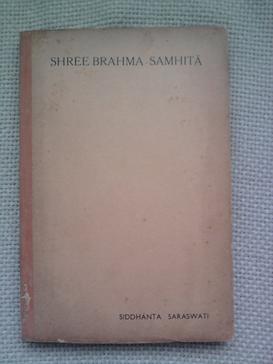Bharadvaja was one of the revered Vedic sages (maharishi) in Ancient India. He was a renowned scholar, economist, grammarian and physician. He is one of the Saptarishis.
Saṃhitā literally means "put together, joined, union", a "collection", and "a methodically, rule-based combination of text or verses". Saṃhitā also refers to the most ancient layer of text in the Vedas, consisting of mantras, hymns, prayers, litanies and benedictions.

Astrological belief in correspondences between celestial observations and terrestrial events have influenced various aspects of human history, including world-views, language and many elements of social culture.

Pancharatra was a religious movement in Hinduism that originated in late 3rd-century BCE around the ideas of Narayana and the various avatars of Vishnu as their central deities. The movement later merged with the ancient Bhagavata tradition and contributed to the development of Vaishnavism. The Pancharatra movement created numerous literary treatises in Sanskrit called the Pancharatra Samhitas, and these have been influential Agamic texts within the theistic Vaishnava movements.
Utpala, also known as Bhaṭṭotpala was an astronomer from Kashmir region of present-day India, who lived in the 10th century. He wrote several Sanskrit-language texts on astrology and astronomy, the best-known being his commentaries on the works of the 6th-century astrologer-astronomer Varāhamihira.

The Bhrigu Saṃhitā is a Sanskrit astrological (Jyotisha) treatise attributed in its introduction to Bhrigu, one of the "Saptarishis" of the Vedic period. Its introductory chapter states that it was compiled by the saptrishi uttaradhikari out of compassion for humanity so that humanity could cope with the pressures of its existence and move towards a more spiritual nature. The Bhrigu Samhita claims to contain predictions about current and future lives as well as information about past lives.

The Yuga Purana is a Sanskrit text and the last chapter of a Jyotisha (astrology) text Vriddhagargiya Samhita. It is also considered a minor text in the Puranic literature.

The Brahma Samhita is a Sanskrit Pancharatra text, composed of verses of prayer believed to have been spoken by Brahma glorifying Krishna.
A jyotiḥśāstra is a text from a classical body of literature on the topic of Hindu astrology, known as Jyotiṣa, dating to the medieval period of Classical Sanskrit literature. Only the most important ones exist in scholarly editions or translations, while many remain unedited in Sanskrit or vernacular manuscripts.
Hora Sara is an ancient treatise on Hindu astrology, in relation to divination, written in the Sanskrit Sloka format. Its author, Prithuyasas, was the son of Varahamihira.
Hora Ratna, a treatise on the predictive part of Hindu astrology, was written in the usual Sanskrit Slokas - format by Bala Bhadra sometime during the reign of the Muhghal Emperor Shah Jahan. Whereas the opinion of Parashara prevails much more in North of India, in South India the method of Bala Bhadra, who was influenced by Garga, is considered to be more authoritative. This text is a unique treatise on the effects of the twelve signs and houses which aspect it deals in its own peculiar way.
Garga Horā is a very ancient treatise on the predictive part of Hindu astrology. Its author, Ṛṣi Garga, is one of the sages of the Purāṇika times. He was the son of Ṛṣi Bharadvāja. There are 8 Siddhāntas of Hindu astrology, they are – Brahmā, Sūrya, Soma, Vasiṣṭhta, Pulastya, Romaka, Arya, and Garga Siddhāntas – the last named is named after the author of Garga Horā, and Garga Saṁhitā, and with whom Jyotiṣa is associated. Garga Horā is written in the Sanskrit Sutra – format and from this work Varāhamihira has drawn profusely. Incidentally, both, Garga and Varāhamihira, have in their respective works referred to the proficiencies of the Greeks in the field of Astronomy.
Bhadrabahu III was a Jain monk who wrote Niryuktis (commentaries) on the redacted Agama-sutras.

Garga-samhita is a Sanskrit-language Vaishnavite scripture based on Hindu deities Radha and Krishna. Its authorship is claimed to be attributed to the sage Garga, the head priest of Krishna's clan Yadava. It is the earliest text that associates Radha Krishna and gopis with the Holi festival.
Gargiya-jyotisha, also known as Garga-samhita, is a 1st-century Indian Sanskrit-language astrological treatise attributed to Garga. The oldest extant text of the Indian astrology (jyotiḥśāstra), it is written in form of a dialogue between Garga and Kraushtuki.
Garga-samhita, is an Indian Sanskrit-language text on jyotisha, written as a dialogue between the sages Bharadvaja and Garga. Although attributed to Garga, it was definitely not composed by the ancient astrologer of that name, and can be dated to 6th-7th century CE.
Garga, also known as Vṛddha Garga, was an ancient Indian scholar of jyotisha. Several Sanskrit-language jyotiḥśāstra works - covering topics such as astrology, astronomy, and divination - are attributed to him. These works were written over several centuries, and are obviously not the work of a single author. Modern scholars generally date the oldest of these works - Gargiya-jyotisha - to the 1st century CE, although the source materials for these works may be much older.
Samāsa Saṃhitā is a lost work on astrology by the 6th-century astrologer-astronomer Varāhamihira of present-day central India. An abridged version of Bṛhat Saṃhitā, it is known from excerpts in Utpala's commentary on the Bṛhat Saṃhitā.





